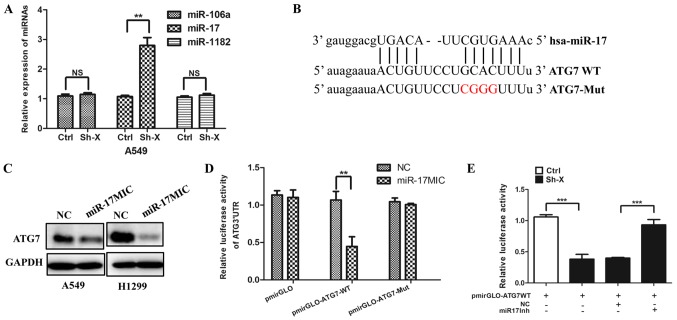Figure 4.
lncRNA-XIST inhibits the expression of miR-17 to modulate ATG7. (A) A549 cells were transfected with Sh-X or the control plasmid (Ctrl) for 72 h, and the expression of miR106, miR-17 and miR-1182 were examined by quantitative real-time PCR. Data are showed as mean ± SD of three independent experiments. (B) Schematic representation of the predicted miR-17 target site and the mutation miR-17 binding site in the 3′-UTR of human ATG7 mRNA. (C) A549 and H1299 cells were transfected with miR-17 mimics (miR-17MIC) and the negative control (NC) for 48 h. The expression of ATG7 was examined by western blotting. GAPDH was used as the normalization control. (D) Luciferase reporter activity for the 3′-UTR of ATG7 and the mutation binding site cloned in pmriGLO and transfected in A549 cells with NC and miR-17MIC, respectively. Luciferase activity was examined after 48 h. (E) The control or knockdown lncRNA-XIST A549 cells were co-transfected the miR-17 inhibitor (miR-17Inh) and NC with pmirGLO, pmirGLO-ATG7WT for 24 h. Then the dual-luciferase reporter assay was performed. NS, not significant. **P<0.01, ***P<0.001.

